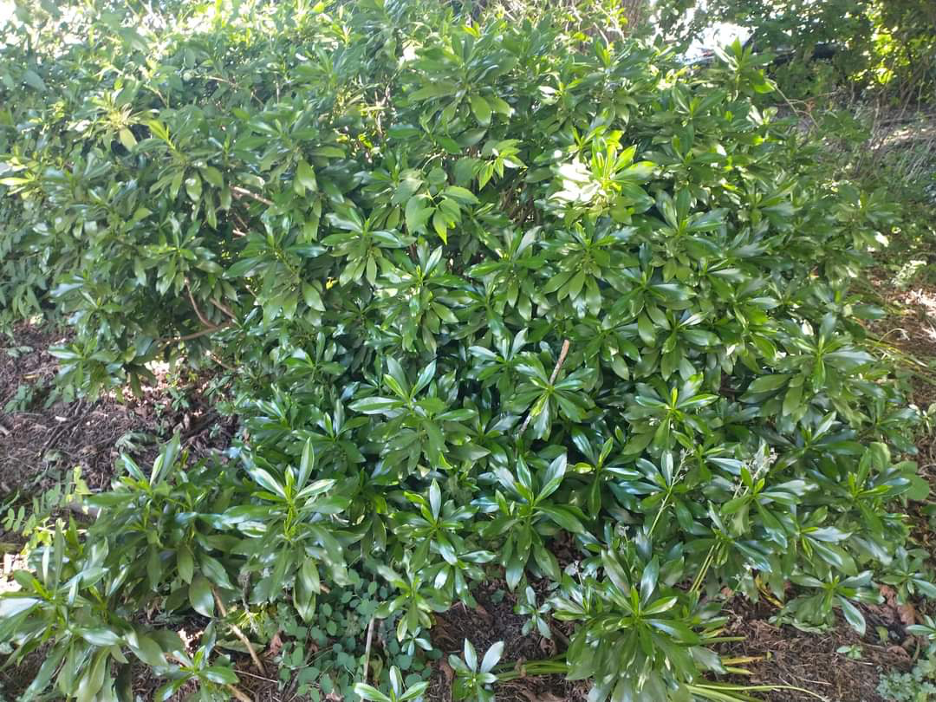Scientific Name: Daphne laureola, commonly known as Daphne or spurge laurel.
By Laura Black

How to Identify
Daphne grows to 1.5 m in height in either a single stem or a multi-branching shrub. As it gets taller, only the topmost section of the plant has leaves. Its rhododendron-like leaves are dark green, glossy, oval-shaped and grown in a spiral pattern around the top of the stem.

In the spring, axial clusters of tiny, fragrant, light yellow-green flowers form between the leaves. The young fruit are green turning to black and even though poisonous to pets & humans – wild birds like them.

Which parts of the plant are poisonous?
The toxins are concentrated in the sap, bark and berries. Spurge Laurel is listed as a poisonous plant with the Canadian Poisonous Plants Information System and as a toxic plant by Worksafe BC. Its toxic sap can cause skin rashes, nausea, swelling of the tongue, and in rare instances coma.
How to Remove
Daphne is designated as a ‘Management Species’ on the BC Provincial Priority Invasive Species List. Always wear your Personal Protective Equipment (PPE) – gloves and preferably goggles and a breathing mask. Small plants can be pulled out by hand, but larger plants should be carefully cut just below the soil line (removing some roots) with large loppers. Many non-profit organizations and CRD-based volunteer groups tackle the removal of invasive plant species.
Reach out and get trained on how to remove invasive species with like-minded enthusiastic volunteers with organizations such as:
Habitat Acquisition Trust
Greater Victoria Green Team – An Environmental Charity
Volunteering for Regional Parks
How to Dispose of Plants
Place in bags or covered loads marked as ‘Invasive Species’ and take to the Hartland Landfill
What to Grow Instead of Daphne laureola:
Evergreen huckleberry (Vaccinium ovatum).
Japanese azalea (Rhododendron kiusianum hybrids).
Oregon grape (Berberis Nervosa).
Tall oregon grape (Berberis aquifolium).
Winter daphne (Daphne Odora).
Sources:
Invasive Species Council of BC: Youtube video, “How to ID & Manage Daphne laurel”. How to: ID and Manage Daphne laurel
The Invasive Species Council of BC: Fact Sheet – About This Species. https://bcinvasives.ca/invasives/daphne-spurge-laurel/
The Invasive Species Council of BC: Fact sheet – Grow Me Instead. https://bcinvasives.ca/play-your-part/plantwise/grow-me-instead/
WorkSafeBC: Fact Sheet – Toxic Plant Warning (Publication Date: 2006)
https://www.worksafebc.com/en/resources/health-safety/information-sheets/toxic-plant-warning/severe-skin-irritation-from-spurge-laurel-daphne-laureola?lang=en
Capital Regional District: Fact Sheet – Invasive Species. Information on disposal. https://www.crd.bc.ca/education/concerns/invasive-species